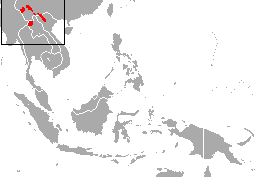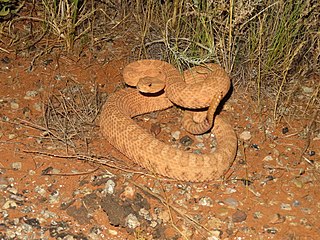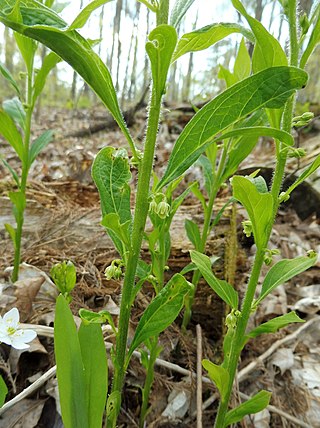
The cougar is a large cat native to the Americas. Its range spans from the Canadian Yukon to the southern Andes in South America and is the most widespread of any large wild terrestrial mammal in the Western Hemisphere. It is an adaptable, generalist species, occurring in most American habitat types. This wide range has brought it many common names, including puma, mountain lion, catamount and panther. It is the second-largest cat in the New World, after the jaguar. Secretive and largely solitary by nature, the cougar is properly considered both nocturnal and crepuscular, although daytime sightings do occur. Despite its size, the cougar is more closely related to smaller felines, including the domestic cat, than to any species of the subfamily Pantherinae.

Firs are evergreen coniferous trees belonging to the genus Abies in the family Pinaceae. There are approximately 48–56 extant species, found on mountains throughout much of North and Central America, Europe, Asia, and North Africa. The genus is most closely related to Cedrus (cedar).

The sooty falcon is a medium-sized falcon breeding from northeastern Africa to the southern Persian Gulf region. The word sooty means to be covered in soot (ash), and is used to describe the color of the Sooty Falcon. Hence, the falcon gets its name from its color, the color of soot.

Abies concolor, the white fir, is a coniferous tree in the pine family Pinaceae. This tree is native to the mountains of western North America, including the Cascade Range and southern Rocky Mountains, and into the isolated mountain ranges of southern Arizona, New Mexico, and Northern Mexico. It naturally occurs at elevations between 900–3,400 metres (3,000–11,200 ft).

The pig-tailed langur, monotypic in genus Simias, is a large Old World monkey, endemic to several small islands off the coast of Sumatra in Indonesia. Its face is black, its fur is black-brown and it has a relatively short tail. It is a diurnal species, feeding in the rainforest canopy on leaves, and to a lesser extent, fruit and berries. Little is known of its natural history, but it is heavily hunted, its populations have been declining rapidly and the International Union for Conservation of Nature has assessed its conservation status as being "critically endangered". It has been included on a list of the World's 25 Most Endangered Primates.

The southern white-breasted hedgehog, sometimes referred to as white-bellied hedgehog or white-chested hedgehog, is a hedgehog native to Eastern Europe and Southwestern Asia.

Nomascus is the second-most speciose genus of gibbons. Originally, this genus was a subgenus of Hylobates, and all individuals were considered one species, Hylobates concolor. Species within Nomascus are characterized by 52 chromosomes. Some species are all black, some are light with a distinct black tuft of crown fur, and some have distinct, light-colored cheek patches. Nomascus is found from southern China (Yunnan) to southern Vietnam, and also on Hainan Island. One species, Nomascus nasutus, has been deemed "the most critically endangered ape species in the world". All species in this genus are either endangered or critically endangered.

The North American cougar is a cougar subspecies in North America. It is the biggest cat in North America, with North American jaguars being fairly small. It was once common in eastern North America, and is still prevalent in the western half of the continent. This subspecies includes populations in western Canada, the western United States, Florida, Mexico and Central America, and possibly South America northwest of the Andes Mountains. It thus includes the extirpated Eastern cougar and extant Florida panther populations.

The dusky crag martin is a small passerine bird in the swallow family. It is about 13 cm (5 in) long with a broad body and wings, and a short square tail that has small white patches near the tips of most of its feathers. This martin has sooty-brown upperparts and slightly paler underparts. The two subspecies are resident breeding birds in South Asia from the Indian subcontinent to southwestern China and the northern parts of Thailand, Vietnam and Laos.

The black crested gibbon is a Critically Endangered species of gibbon found in China, Laos, and northern Vietnam, with four subspecies.

The brown fruit-eating bat is a bat species found in Brazil, Colombia, Ecuador, French Guiana, Guyana, Peru, Suriname and Venezuela.

Oecomys concolor, also known as the unicolored oecomys, unicolored rice rat, or unicolored arboreal rice rat, is a species of rodent in the genus Oecomys of family Cricetidae. It is found in tropical rainforest in the Amazon biome, but its range is poorly documented; it has been recorded in northwestern Brazil, southeastern Colombia, and southern Venezuela.

The eastern cougar, or eastern puma, is a subspecies designation proposed in 1946 for cougar populations in eastern North America. The subspecies as described in 1946 was declared extinct by the U.S. Fish and Wildlife Service in 2011. However, the 1946 taxonomy is now in question. The Canadian Wildlife Service has taken no position on the taxonomy. Cougars are currently common in western North America and may be expanding their range. Individuals are occasionally seen as vagrants in eastern North America.

Schippia concolor, the mountain pimento or silver pimeto, is a medium-sized palm species that is native to Belize and Guatemala. Named for its discoverer, Australian botanist William A. Schipp, the species is threatened by habitat loss. It is the sole species in the genus Schippia.
Leptopelis concolor is a species of frog in the family Arthroleptidae. It is found in the coastal lowlands of southern Somalia, Kenya, and northeastern Tanzania. Common names triad tree frog, Witu forest treefrog, and pale-coloured tree frog have been coined for it.

The brown-tailed mongoose, brown-tailed vontsira, Malagasy brown-tailed mongoose, or salano is a species of mammal in the family Eupleridae. It is endemic to Madagascar. Its natural habitat is moist lowland tropical forest. It is threatened by habitat loss.
The Monterrey Spanish mackerel is a species of fish in the family Scombridae. It is endemic to Mexico where it is found in the northern part of the Gulf of California. It is the subject of a fishery, its population is declining and the IUCN has rated it as being a "vulnerable species"

Crotalus concolor, commonly known as the midget faded rattlesnake, faded rattlesnake and yellow rattlesnake, is a pit viper species found in the western United States. It is a small rattlesnake known for its faded color pattern. Like all other pit vipers, it is venomous.

Hybanthus concolor, commonly known as eastern green violet, is a flowering plant in the violet family (Violaceae). It is native to eastern North America, where it is found through much of the interior areas of the eastern United States and Ontario, Canada.

The South American cougar, also known as the Andean mountain lion or puma, is a cougar subspecies occurring in northern and western South America, from Colombia and Venezuela to Peru, Bolivia, Argentina and Chile.

















